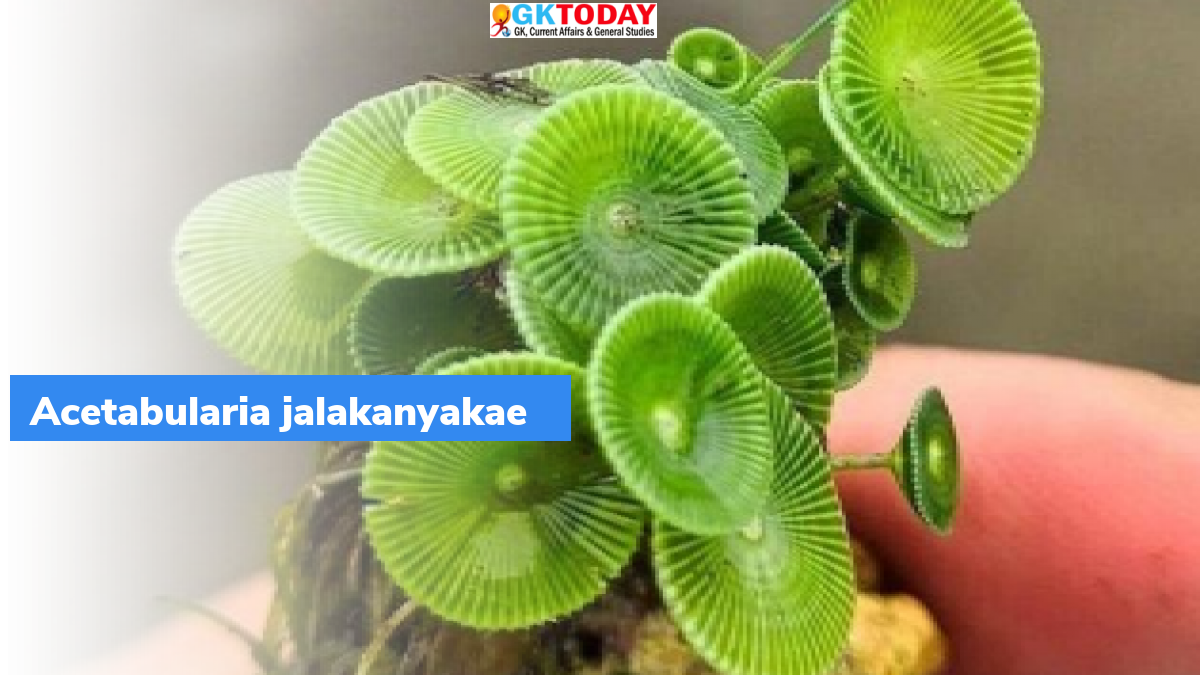Acetabularia jalakanyakae
Acetabularia jalakanyakae is the new marine algae species discovered in India.
Discovery of the species
- Acetabularia jalakanyakae was discovered by Indian scientists from the Central University of Punjab in the Andamans archipelago. The scientists sighted the species in 2019 during their trip to Andamans.
- However, it was an arduous task to confirm its discovery. It took two years for scientists to sequence its DNA and confirm the species. Its discovery is published in the Indian Journal of Geo-Marine Sciences.
Main features of the species
- Acetabularia jalakanyakae is morphologically similar to another green algal species called Acetabularia crenulata found in Florida. In Sanskrit, Jalakanyaka means mermaid and a goddess of oceans.
- The main body of Acetabularia jalakanyakae comprises of following three regions:
- A basal part with a rhizoidal holdfast.
- A middle region with a long stalk.
- The topmost upper part with an umbrella-shaped circular cap.
- The plant’s gigantic cell with a nucleus distinguishes it from other similar species. The regenerative potential of the plant is another special feature.
Importance of marine algae
- Through photosynthesis, algae convert atmospheric carbon dioxide into food for the marine ecosystem. Thus, they form the foundation of the food chain. They are also consumed by detrivores.
- Almost two-thirds of oxygen in the air we breathe is produced by marine algae.
- When marine algae die, they sink to the ocean floor, which later becomes petroleum.
Thus, marine algae have numerous advantages. However, climate change is threatening their existence with sea-level rise, ocean acidification, and other dangerous impacts.
Month: Current Affairs - March, 2022
Category: Environment Current Affairs


